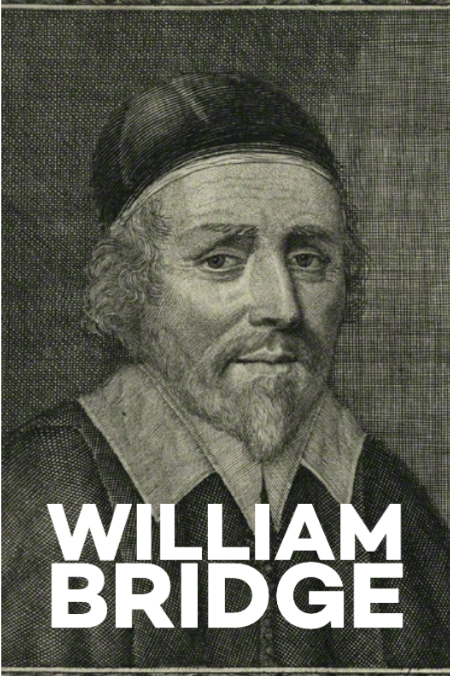“A praying man can never be very miserable, whatever his condition be, for he has the ear of God; the Spirit within to indite, a Friend in heaven to present, and God Himself to receive his desires as a Father. It is a mercy to pray, even though I never receive the mercy prayed for.” — William Bridge.
William Bridge was born in 1600, and he died in 1670. He studied at Emmanuel College, Cambridge. At the age of twenty-three, he earned a bachelor’s degree and three years later a master’s degree. Bridge was ordained as a priest in the Church of England in 1627, one year after graduating. Five years later, he became the rector (the priest in charge of a self-supporting parish) of St. Peter Hungate in Norwich in 1632.
In 1636, under Charles I, he was exiled to Rotterdam in Holland. While at Rotterdam, he renounced his ordination from the Church of England and ordained as an independent minister. While in the Netherlands, he became friends with two independent ministers, Sidrach Simpson, and Jeremiah Burroughs. These three labored together within their respective churches as propagandists for congregationalism in the 1640s. Bridge, Simpson, and Burroughs were also members of the Westminster Assembly in the 1640s and pushed for an independent church. Bridge proved himself a noted Independent minister, which made him respected and controversial within the Westminster Assembly. Reasons for his controversy, he opposed forms of Presbyterian Government.
When political tensions and religious toleration eased, he returned to England in 1642 and frequently preached before the Long Parliament. That same year he accepted a position as town preacher at Yarmouth, where he organized an Independent Church and formally became its pastor in 1643. Bridge labored there until Archbishop Laud’s Act of Uniformity in 1662, which had him ejected from the ministry by not capitulating and labeled a non-conformist.
After his ejection, Bridge spent his remaining years at Yarmouth and Clapham, Surrey. He died at Clapham on 12 March 1670, aged 70. Scholars found an epitaph in the Yarmouth church semitary, which states that he was twice married. The name of his first wife is unknown; he afterward married the widow of John Arnold, merchant, and bailiff of that town.
During his lifetime, Bridge’s most famous writing was a three-part sermon series on Psalm 42:11 titled, “A Lifting Up for the Downcast.” Bridge’s series was preached in a time of much uncertainty, political tensions, unrest between the Parliament and the Crown, food shortages, bleak outlook on farming, rising housing prices, the rising cost of housing materials, disease, and rumors of a strange new epidemic on the continent killing thousands. In this book, Bridge explores the realities of any trials of life that may cause one to be discouraged or downcast. Bridge’s answer to the discouraged, downcasted, or depressed is to know sound doctrine, “knowing and believing who God is, knowing and believing who Christ is, knowing and believing what the gospel is” provides even the most disheartened individual with hope. A Lifting Up for the Downcast is a call to Christians to take their eyes off of themselves and their conditions and look unto God who is the author and finisher of their salvation.
William Bridge was a Puritan preacher through and through. He was an excellent preacher, scholar, theologian, prolific writer, and one who had a robust library. At the same time, he also had a heart for the people under his care, and his parishioners viewed him as a “charitable and candid pastor whose ministry helped many people.”

